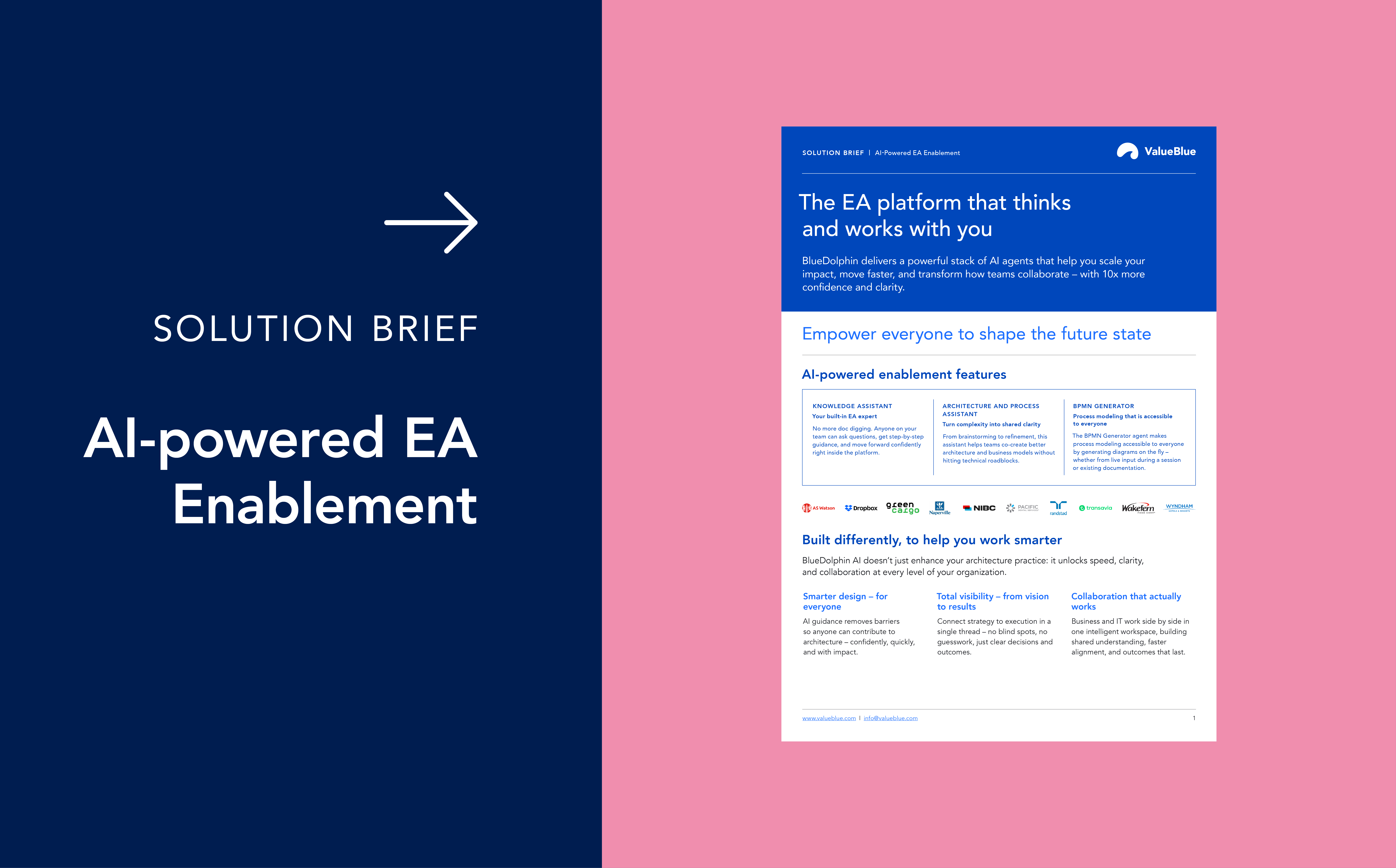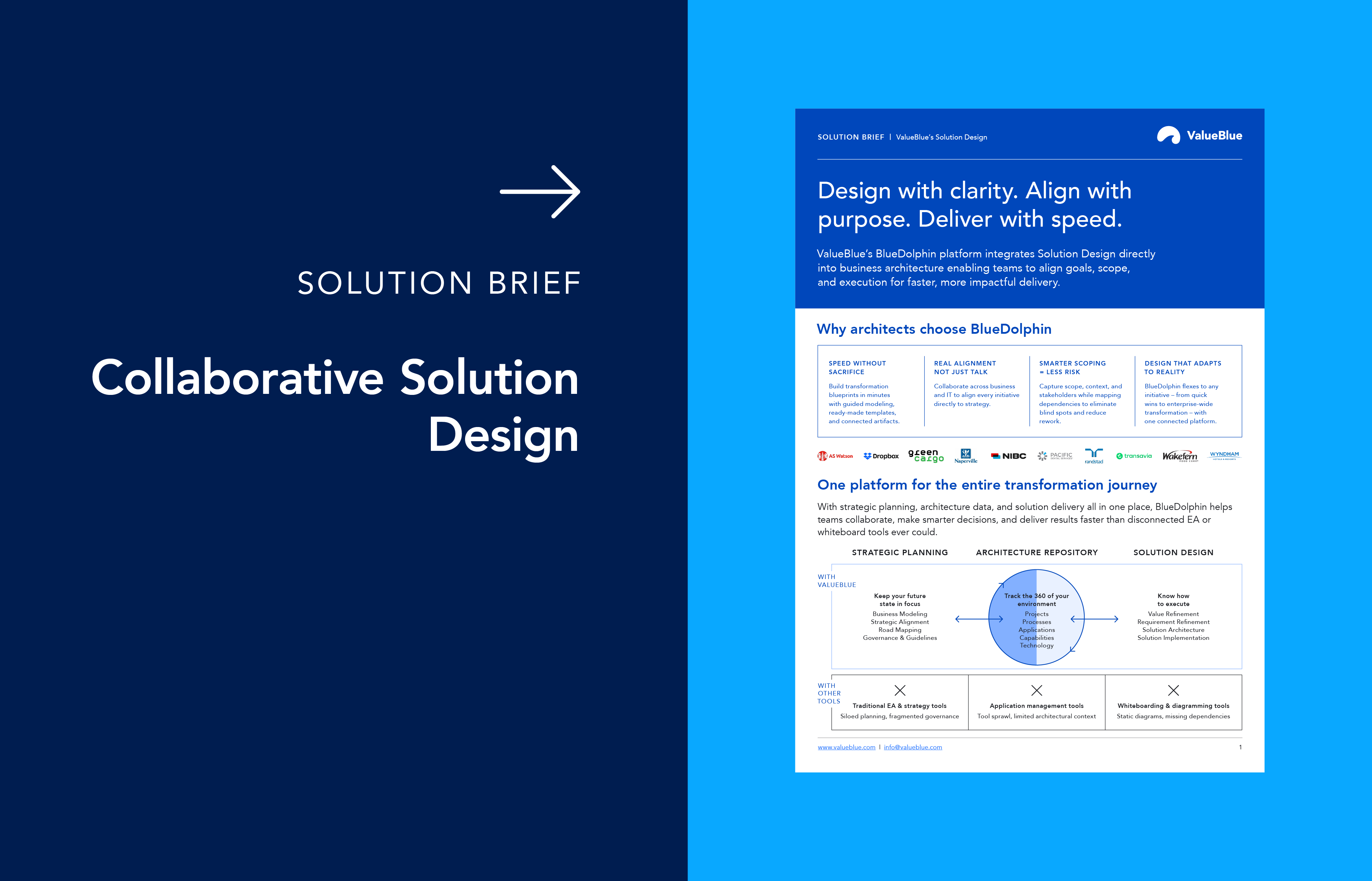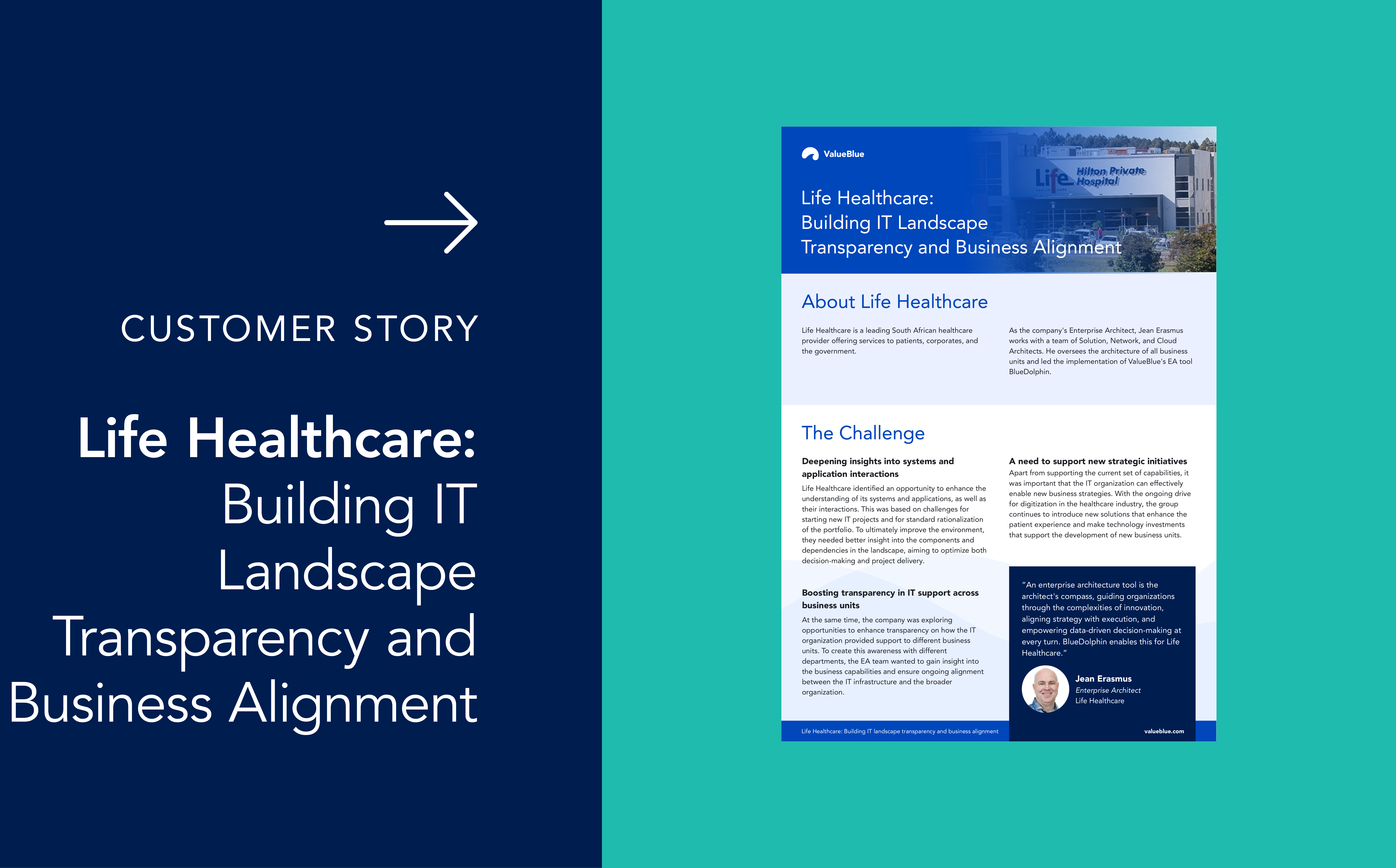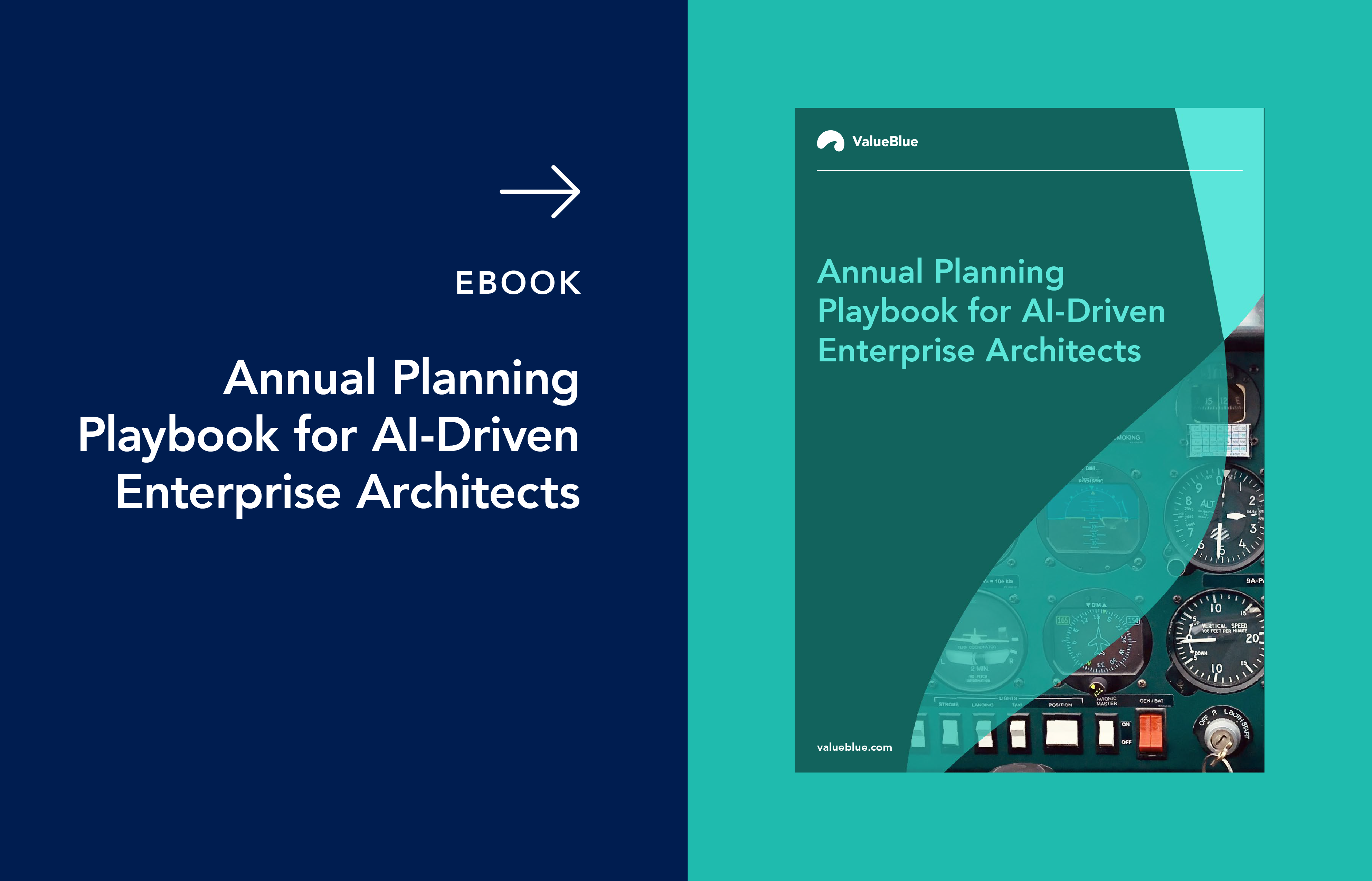7 Common Enterprise Architecture Challenges & Solutions
Enterprise Architecture (EA) isn’t just about managing IT systems – it’s about creating a clear connection between business goals and the technology that supports them. However, while EA has the potential to be a strategic powerhouse, many organizations struggle to unlock its full value.
If you’re working with EA – or considering improving your current approach – you’ve probably encountered at least one of these obstacles. The good news? They’re solvable. Let’s walk through seven of the most common Enterprise Architecture challenges and explore how to tackle each one effectively.
1. Lack of business buy-in
One of the biggest complaints from Enterprise Architecture teams is that the rest of the business appears to be uninterested. Without executive sponsorship or departmental engagement, EA initiatives often stall or fail to gain traction.
The fix: Start by speaking the language of the business. Enterprise Architecture should never feel like a purely technical exercise. Instead of showcasing detailed diagrams or frameworks, explain how EA supports broader business goals, like speeding up time to market, reducing costs, or simplifying compliance. Frame your work with tangible outcomes and invite stakeholders to co-create the roadmap. When Enterprise Architecture is presented as a partner in business success rather than a disconnected IT function, people are more likely to get on board.
2. Enterprise Architecture seen as outdated or bureaucratic
Let’s face it – EA doesn’t always have the best reputation. In some organizations, it’s viewed as a legacy function that slows things down, enforces rigid standards, and creates roadblocks to innovation.
The fix: Reframe Enterprise Architecture as an enabler of agility rather than a gatekeeper. That means shifting away from static documentation and embracing real-time, dynamic modelling tools. Demonstrate how EA can facilitate streamlined decision-making, guide digital transformation, and promptly assess the impact of proposed changes. When Enterprise Architecture teams move fast, stay current, and deliver value early and often, the old stereotypes fade away.
3. Difficulty demonstrating Enterprise Architecture's ROI
It can be challenging to demonstrate the value of EA, particularly when the benefits are indirect, such as improved governance, reduced redundancy, or more informed decisions. As a result, Enterprise Architecture efforts sometimes lose funding or attention.
The solution: Take measurements seriously. Set clear KPIs from the start – think cost savings from decommissioned systems, faster onboarding of new applications, or reductions in operational risk. Utilize visuals and dashboards to communicate progress and share success stories with leadership effectively. And don’t wait until the end of the project to show results – highlight small wins along the way to maintain momentum and build credibility.
Curious how leading organizations answer these challenges? Let us show you.
Learn how you can make your transformation initiatives run smoothly.
4. Fragmented tools and data
Many EA teams are stuck with a patchwork of outdated tools and siloed data sources, making it nearly impossible to obtain a clear, up-to-date picture of the enterprise landscape.
The fix: Invest in integrated, user-friendly platforms allowing real-time data collection and collaboration. Modern Enterprise Architecture tools aren’t just about drawing diagrams – they bring in live data, connect stakeholders, and support scenario planning. Choose a solution that breaks down silos and makes it easy for everyone – from architects to business leaders – to access and contribute to a shared view of the organization.
5. Lack of skilled resources
Finding and keeping skilled enterprise architects can be a challenge. Even when the team is in place, they may be overwhelmed with reactive work – responding to requests, updating documentation, leaving little time for strategic planning.
The fix: Focus on building a cross-functional team with both technical and business expertise and business acumen. This may involve reskilling existing staff or recruiting new talent with hybrid backgrounds. Additionally, consider appointing “architecture champions” across departments – individuals who understand the value of Enterprise Architecture and can help bridge gaps between teams. Empower non-architects as well by implementing a tool that makes it easier for everyone to contribute to your EA practice. For it to succeed, it’s essential to have a tool that accommodates varying skill levels.
6. Disconnection from business transformation initiatives
In many organizations, EA operates in a silo – separate from the teams driving change, such as digital transformation, customer experience, or mergers and acquisitions. This disconnect can lead to duplicated efforts, inconsistent decisions, or missed opportunities.
The fix: Embed Enterprise Architecture into transformation programs from the start. Enterprise architects should have a seat at the table when strategic initiatives are being planned and executed. This allows EA to provide valuable context, ensure alignment, and help avoid technical debt. Think of Enterprise Architecture as the connective tissue that keeps transformation efforts coherent, efficient, and grounded in reality.
7. Too much focus on technology, not enough on outcomes
When EA becomes too focused on systems, applications, and infrastructure, it can lose sight of the ultimate goal: enabling the business to succeed.
The fix: Shift the focus from technology to outcomes. What problems is the business trying to solve? What goals is it working toward? Use those answers to guide your Enterprise Architecture priorities. This may involve adjusting your modelling approach, reevaluating your metrics, or even challenging legacy systems and processes that no longer serve their intended purpose. EA isn’t about perfection – it’s about relevance. Keep asking: “How does this help the business thrive?”
Make Enterprise Architecture visible, valuable, and vital
Enterprise Architecture has come a long way from its ivory tower origins. Today, it can drive innovation, serve as a guardian of coherence, and act as a catalyst for informed decision-making. But only if it evolves.
To overcome the common Enterprise Architecture challenges outlined here, it needs to become more integrated, agile, and outcome-driven. It must move beyond documentation and frameworks to deliver real-world impact. That means engaging stakeholders, modernizing tools, demonstrating value, and always keeping the business at the heart of everything you do.
Want some help with making that happen?
Book a demo
Explore how you can design and align your transformation initiatives more effectively - from strategy to execution.
Have questions about Enterprise Architecture best practices?
Our experts are happy to help.





